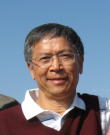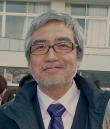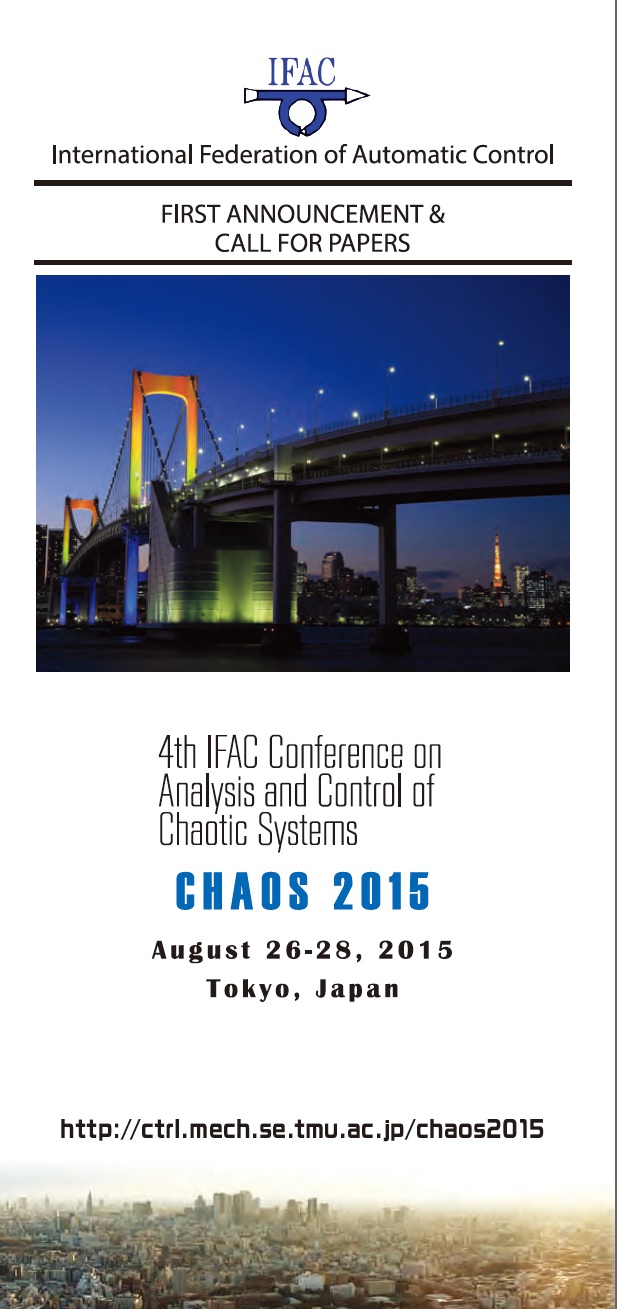Plenary Speakers
- Murat Arcak, Professor of University of California, Berkeley, USA
- Guanrong Chen, Professor of City University of Hong Kong, Hong Kong
- Leon O. Chua, Professor Emeritus of University of California, Berkeley, USA
- Adilson E. Motter , Professor of Northwestern University, USA
- Toshiyuki Nakagaki, Professor of Hokkaido University, Japan

Professor Murat Arcak
PATTERN FORMATION AND SYNCHRONIZATION IN BIOLOGY
Abstract:
Breaking symmetry in spatially distributed networks is a fascinating dynamical
systems problem and is of fundamental interest to developmental biology.
We will discuss two types of local interaction that underlie formation
of gene expression patterns in multi-cellular organisms: diffusion
and cell-to-cell contact signaling. We will first present new insights
on a diffusion-driven mechanism for pattern formation and propose a synthetic
gene network built upon this mechanism. We will then discuss contact-mediated
inhibition that is responsible for segmentation and fate-specification.
We will introduce a dynamical model to represent this mechanism and reveal
the key properties of the model that are necessary for pattern formation.
The results will also yield new insights for the converse problem
of maintaining spatial homogeneity, that is, synchrony. In particular,
we will present a synchronization test applicable to reaction-diffusion
models. We will conclude the talk with a distinct biological problem
where synchronization plays an important role: the locomotion of
swimming microorganisms. Examples include the bundling of flagella
and coordination of cilia. With large-scale numerical simulation results
for low Reynolds number flows, we will argue that synchronization can result
from hydrodynamic interactions alone.

Professor Guanrong (Ron) Chen
CHAOTIC SYSTEMS WITH ANY NUMBER OF EQUILIBRIA AND THEIR HIDDEN ATTRACTORS
Abstract:
In a typical 3D autonomous chaotic system, the number of equilibria is
two or three, such as the Rossler system and the Lorenz system. Today,
we are able to find or even to construct a relatively simple 3D autonomous
chaotic system that has any preferred number of equilibria, while some
of which have only hidden attractors. In this talk we will briefly discuss
such an interesting phenomenon, with basic ideas explained and a unified
design methodology introduced.

Professor Leon O. Chua
MEMRISTOR, BRAIN, AND EDGE OF CHAOS
Abstract:
Postulated in 1971 and reported as a working nanodevice by HP in the 1
May 2008 issue of Nature, the "memristor" has since been hailed
as a disrupting technology that would soon replace flash memories, DRAMS,
and hard drives. Memristors are endowed with non-volatile memories and
highly nonlinear dynamics that could emulate synapses and action potentials,
leading naturally to learning and intelligence near the edge of chaos .
Memristors is the right stuff for building brain-like machines that compute
via non-von Neumann architecures and unconventional operating systems.
It can out-perform supercomputers by orders-of-magnitude improvements in
speed and power consumption. This lecture will take a glimpse at the salientsignature
and fingerprints of the memristor, and illustrate its potential via simple
toy examples. In view of its memristive brain-like nonlinear dynamics,
memristor-based systems can exhibit many chaotic and Hamiltonian dynamics.
This lecture will also illustrate such uncovnentional and complex dynamical
phenomema.

Professor Adilson E. Motter
TO WHAT EXTENT CAN NONLINEAR NETWORK DYNAMICS BE CONTROLLED? AND WHAT FOR?
Abstract:
Numerous systems are now modeled as complex networks of coupled dynamical
entities. Nonlinearity and high-dimensionality are hallmarks of the dynamics
of complex networks but have generally been regarded as obstacles to control.
In this talk, I will discuss recent approaches to control nonlinear network
dynamics that are effective in large networks and even in the presence
of constraints, noise, and uncertainty. I will also discuss applications
to physical, biomedical, and ecological problems, including transient stability,
drug target identification, cascade control, and network repurposing.

Professor Toshiyuki Nakagaki
PHYSICAL ETHOLOGY OF AN AMOEBA
Abstract:
We report here that ability of information processing in an amoeboid organism
is higher than we had thought. The model organism is the plasmodium of
Physarum polycephalum (true slime mold), which is a large aggregate of
protoplasm with a large number of nuclei. The organism found the optimal
path when it obtained the multiple locations of food. A simple mathematical
model for the path finding was proposed in terms of differential equations.
As well as the path-finding ability, the organism was able to anticipate
the next timing of periodic climate change after experienced some periodic
changes of climate, and to show a kind of behaviors that seemed to be '
indicisive ' when it encountered the presence of a chemical repellent,
quinine. We indicated that a simple dynamics was enough to reproduce these
observed behaviors. Mathematical modeling is helpful to understand the
mechanism of behavioral smartness in slime mold.
